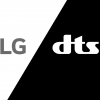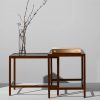HDMI / DVI connectivity. Fiber optic vs. copper, which is right for you?
As digital displays become a bigger part of our every day life, and as more people understand that a DVI or HDMI connection can deliver the best picture quality available today, more and more installation companies and ‘end users’ are debating on which type of cable would suit their needs best.
There are two major choices when it comes to choosing the technology for your connection cable. Copper or Fiber Optic. While the fiber optic cable is considered to be the best and the only type for running long distances, at a short distance it is much harder to choose, because that’s where copper comes into play. A major problem of every cable is its impedance (resistance to pass the signal). A properly built fiber optic cable would have virtually no impedance, resulting in zero loss. Every day more end users and installation companies use this type of connection, as they say (to be on a safe side or to have a piece of mind). And I have to agree with them, because a proper installation would require impedance and signal strength testing, which takes up a lot of valuable time.
There’s not too much to know about fiber optic cables, besides the price point and the difference in loss between cables made by different companies. Even though a lot of companies state that their optical fiber has no loss, which is not true. Some of the light signal degrades within the fiber, mostly due to impurities in the glass. The degradation of the signal depends upon the purity of the glass and the wavelength of the transmitted light (for example, 850 nm = 60 to 75 percent/km; 1,300 nm = 50 to 60 percent/km; 1,550 nm is greater than 50 percent/km). Some premium optical fibers show much less signal degradation — less than 10 percent/km at 1,550 nm, but it’s usuallynot available in Home Entertainment or Video industry.
When it comes down to copper, there are 2 types to choose from: a 24AWG1 and a 28AWG. And just as with any other cable type, impedance plays a very big role here. 2 major factors that determine impedance are AWG and length. A lower number of AWG would mean a thicker cable and lower impedance. The maximum recommended distance for a 28AWG cable if you are running 720P or 1080i is 13 feet. Since the 24AWG cable has lower impedance, it can run for much longer distances than a 28AWG. Maximum Recommended length for a 24AWG at the resolutions of 720P or 1080i would be 50 feet. In most cases, a standard 24AWG or 28AWG cable would not pass 1080P. An Ability to pass this type of signal is a very rare quality of a copper cable and requires a specific design, which raises the price of the cable and shortens the length of it dramatically.
Of course a price point always has its own place in any merchandise. A Fiber Optic cable would always be much higher in price, but it’s capable of transferring resolutions up to 1080P and run up to 500 feet. A copper cable is always a cheaper way out, but unfortunately it’s capable of carrying resolutions only up to 1080i and 720p and can run up to 50 feet.
Some companies like ours carry Fiber Optic, 24AWG and 28AWG cables, which mean that prior to your order you can always look at different types available and get exactly what you need. So before you order a set of cables for yourself or your company, make sure which type fits your application the best. There are a lot of high quality Fiber Optic and copper cable manufacturers to choose from, so you shouldn’t have a problem selecting the one that you need.
1 AWG (gauge): a way of measuring the thickness of the cable. For example: 1AWG means that a thickness of a cable without the insulation is 1in. Numbers like 24AWG and 28AWG mean that 24 or 28 of those cables without the insulation would fit into 1in. In simple words, the lower the number, the thicker the cable and impedance would be lower.
By Stan Palguyev, Lenexpo





























